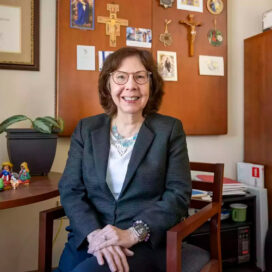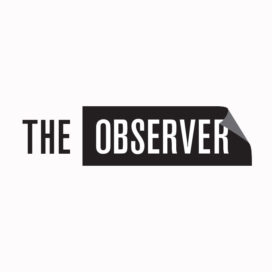Seeing Google with the eyes of Forrest Gump
Published: August 10, 2004 / Author: GARY Times
Any investor intent on Google might do well to remember Gump.
When the makers of the 1994 movie “Forrest Gump” sought a plot device that would render its main character fabulously rich, they cast him as an early investor in what Forrest Gump described as “some kind of fruit company”:Apple Computer. By dumb luck, the movie suggested, its guileless hero had amassed so many millions that he could finance a Gump Medical Center, build a Baptist church and allow the family of his fallen friend Bubba to live in luxury.
In the real world, though, Apple would hardly make anyone’s list of Wall Street’s greatest hits, despite its considerable business accomplishments. Like Google today, Apple was a young but profitable company celebrated by the media when it made its stock market premiere in December 1980. But because much of its future potential was already factored into its initial offering price, few other than the company’s founders and its venture capitalists can boast they got rich off Apple.
Had Forrest Gump bought Apple at the closing price on its first day as a publicly traded company and held it for five years, he would have lost more than 30 percent of his money, said Tim Loughran, a finance professor at the University of Notre Dame who studies initial public offerings.
Apple then rebounded, and the stock more than doubled by the time “Gump” was released, in mid-1994, but Forrest Gump would have done better in an index fund. Over time, Professor Loughran said, the company “has gotten absolutely creamed” by the Standard & Poor’s benchmark of the top 500 companies.
“I always have to laugh at Forrest Gump because they never bothered to check the price,” Professor Loughran said.
Wall Street has always had child prodigies that arrive rich with promise, dating as far back as R.C.A. in 1920 and peaking in the last decade, when a long list of technology-related companies went public despite their youth. The current case, of course, is Google, the popular Internet search company, which has been expected to go public soon, although various complications seem to be making the timing increasingly uncertain. The company said in a filing with the Securities and Exchange Commission last month that it expected its shares to sell for $108 to $135 each, which would make it the most expensive initial public offering ever per share.
“The problem Apple faced, and the problem a lot of these companies that start off with all this promise face, is because they’ve gotten all this attention, they have a very high price from the start,” Professor Loughran said. “In the case of Apple, the market pegged it as a company that would have to hit at least a couple of big home runs just to justify its original offering price.”
It is as if investors are invited to buy into the future salary potential of a child prodigy – paying a share price that assumes the prodigy will be making $200,000 a year by age 30.
Occasionally one of these prodigies lives up to the advance billing. EBay shares, for example, are up nearly twentyfold from the price at the end of their first day of trading back in September 1998. Yet more often than not, according to stock market veterans and those who study the early lives of publicly traded companies, the glamour stocks fall far short of expectations.
“It’s a continuous cycle that never stops,” said Rod Fadem, a stockbroker at Stifel Nicolaus & Company in St. Louis, who has been in the business since 1960. “Every decade produces these companies that everyone goes nuts over. The price goes up, up, up, up, but then the price starts to fall, and everything goes to hell.”
The Radio Corporation of America, or R.C.A., was perhaps the first such stock, said Jeffrey A. Hirsch, editor of the Stock Trader’s Almanac.
“Wall Street went gaga over R.C.A.,” he said. And for a time, the company enriched those who believed in the commercial potential of radio. The stock soared from $1.50 in 1921 to a high of $549 in 1929.
Two years later, shares in R.C.A. were trading at $2. (Of course, few stocks fared well in the early aftermath of the crash of 1929.)
In the 1960’s, Mr. Fadem said, Wall Street saw many “puff stocks,” which he defined as newly minted public offerings sold by issuers as “a fairy tale long on potential and rosy future earnings estimates.” Many were technology stocks, including University Computing, which leased time on computer systems; Panacolor, promoted as a Polaroid killer; and Farrington Manufacturing, an optical equipment maker that filed for bankruptcy at the start of 1971. Each, he said, ended up losing a significant amount of money for those brave or foolish enough to invest.
“They’re basically all the same – except the name,” Mr. Fadem said.
A ballyhooed new stock that sticks in the mind of Bruce S. Foerster, a 30-year investment veteran, is the beer makerAdolph Coors Company, which went public in 1975. Back then Coors was distributed only in the Western United States, and demand for the beer seemed almost without limit – so much so that Mr. Foerster said “you’d hear about stewardesses selling bootlegged cases for three times the price.”
“Coors was touted like you wouldn’t believe before it actually went public,” said Mr. Foerster, who is the chief financial officer of Aurora Capital in Sunshine, Fla., and whose résumé includes turns at PaineWebber and Lehman Brothers, where he ran the desk responsible for selling newly issued stocks. “But it never lived up to expectations.”
Shares of Coors opened at $31 and hit a high of $36 that same year, but then steadily fell, hitting $9.50 a share by 1980. The company’s stock did not return to its initial offering price until 1997.
Boston Chicken was another hot stock when it made its Wall Street debut. “It had a huge buzz, but it did horrible,” said Professor Loughran of Notre Dame. Again, the problem was that much of its future promise was built into its early stock price.
The company, which later changed its name to Boston Market, opened at $20 and closed at $48.50 a share the day it went public in 1993 for a market value of $839 million. Those who bought the stock at its first-day closing price and then held it for the next three years, Professor Loughran said, saw their investment increase by 49 percent. But those who held on to the stock for five years saw its worth fall by more than 95 percent, he said. In 1999,McDonald’s paid $173.5 million in cash and assumed debts to buy the rights to the Boston Market brand and most of the company’s real estate holdings.
To be sure, plenty of initial public offerings have delivered enormous payouts. An investment in Microsoft at its first-day closing price of $28 a share in March 1986 would have increased fourteenfold in five years, Professor Loughran said. And an investment of $10,000 in Microsoft at the end of its first day of trading would be worth roughly $3 million today.
Microsoft, however, made a relatively quiet debut on Wall Street, as did Intel, which went public in 1971, and Wal-Mart Stores in 1970. “I don’t remember any kind of buildup to Microsoft going public,” Mr. Foerster said. A lack of fanfare, of course, meant a much lower opening price.
Michael Moe, the chief executive of ThinkEquity Partners, a research-oriented investment bank specializing in growth industries, said: “It all comes down to the expectations built into the price of the stock. A company that has all the expectation built into the price has to grow at 40 or 50 or 60 percent annually over the next four or five or six years, and that’s exceptionally hard to do.”
In fact, only 29 publicly traded companies from a pool of more than 10,000 could boast that earnings grew by at least 20 percent each year from 1994 to 1999, said Mat Johnson, who heads ThinkEquity’s economic research department.
“Investors should really be looking for the next Wal-Mart,” Professor Loughran said. “This is a company that didn’t start off with a lot of hype; it didn’t start off with a huge market cap.”
Wal-Mart, went public at $16.50 and had a stock market value of $4.95 million at that point. The company, whose shares closed yesterday at $51.37 now has stock market value of $219.3 billion. An investor who spent $1,650 to buy 100 shares at Wal-Mart’s public offering and held them and retained the additional shares issued through various splits, now owns stock worth more than $10.5 million. It is precisely the success of a hidden gem like Wal-Mart that fuels the rush to buy shares of a stock that dangles the promise of an enormous payout. “History repeats itself because people don’t change,” said Mr. Fadem. “They want to make the fast buck, they want to be part of some hot stock that’s going to swish up. It’s greed at work.”
At the start of the 1980’s, the prodigy stocks that fueled dreams of fast profits tended to be personal computer companies. Besides Apple, there were Commodore Computers and Kaypro, both now out of business.
“In the early 1980’s you had all these hot PC companies that were like shooting stars,” said Fred Hickey, editor of The High-Tech Strategist newsletter in Nashua, N.H., and a longtime technology stock analyst. “One of the leading PC makers at that time, Commodore, went up and up and kept splitting and splitting. It was a wild momentum stock, but it imploded fairly quickly. That rocket ride only lasted a couple of years.”
Mr. Hickey watched the same phenomenon play out in the early 1990’s when a long list of network equipment makers went public. A $10,000 investment in Cisco in March 1990, when the company first went public, would be worth $2.6 million today. But an investor might just as reasonably have chosen Wellfleet Communications or Synoptics Communications instead. Those two companies merged in 1994 to form Bay Networks, which was acquired by Nortel in 1998. “Cisco was just one among many – no better or worse than any of them,” Mr. Hickey said. “These were all big movers in their time, but most are now gone. They were bought up by one company then another, and now collectively they’re worth nothing.”
And of course there were the scores of prodigies that made their Wall Street debut in 1998 and 1999. The most precocious of all might have been VA Linux Systems, the seller of computers running Linux, the free software operating system. Stock in the company, which went public in December 1999, rose 698 percent on its first day of trading – a record – to close at $242 a share. The company, which had never made any money, suddenly had a market value of more than $9 billion.
By last Friday, shares in the VA Software Corporation, as the still profitless company is now known, closed at $1.76 a share, down more than 99 percent from that first-day high. Asked to comment about his company’s stock, VA Software’s chairman, Larry M. Augustin, replied, “I think everything that needs to be said has already been said.”
/news_and_events/news_articles/article/3783/seeing-google-with-the-eyes-of-forrest-gump




